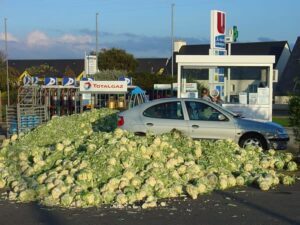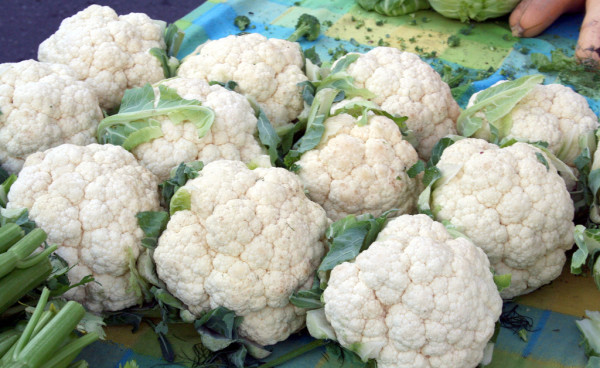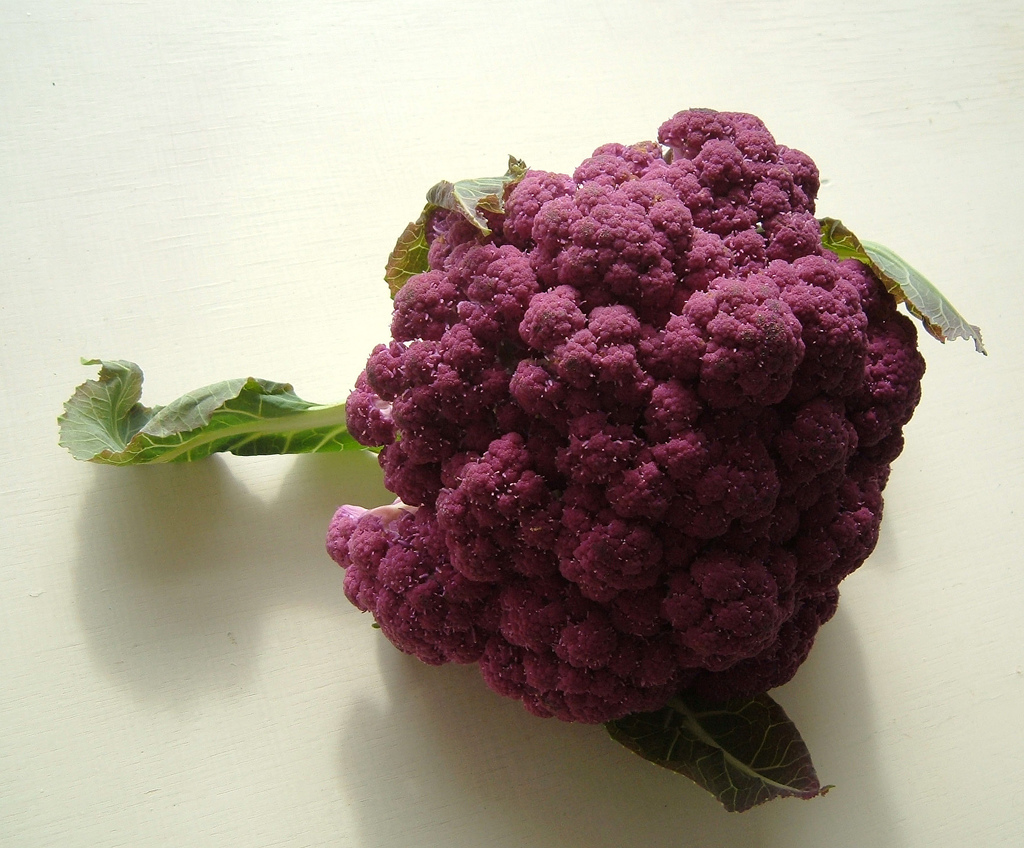Sea of Cauliflowers Engulfs French Village

The cock crows in the Breton village of Lanmeur, France, and as locals sleepily consume their croissants and fresh orange juice, a horrifying discovery is made: the village center has been buried under a deluge of fresh cauliflower. As onlookers stand by, bemused at the veritable vegetable avalanche, the finger of suspicion falls on local farmers – no longer can residents look on the cauliflower as merely a healthy and delicious accompaniment to their evening meal. The blameless cauliflower (so dear to our hearts because it’s so easy to prepare) had become a weapon of war!

Image via bretagne-tip.de
Natural produce is healthy, fresh and super-tasty when it’s sitting on your plate, and while you might take some meal time inspiration from this rain of veggies, we never thought we’d say this but it really is a little too much when it’s brimming over in the streets.
Only a few years back – in protest at EU agricultural policies handed down from Brussels – the very same farmers had set up cauliflower blockades all over the Breton countryside, halting trains and traffic and paralyzing the region. ‘Zeut alors!’ you might exclaim. This time, however, they went a step further, choosing quite simply to inundate the landscape under a flood of cauliflower. In one night alone, over 500 metric tons of the vegetables were dumped in various parts of the Finistère département in northern France, bringing much of the region to a standstill. What waste! That’s far more nutritional goodness than we can take! And a seriously heavy load for a veggie which, when boiled, contains an innocuous 20 calories per portion.

Image via bretagne-tip.de
At first glance, the notion of an organic protest, covering the peaceful Breton landscape with thousands of cauliflowers, might seem amusing – even faintly ridiculous. Yet a serious and growing rural issue lies not far below the surface of the deluge.
For some time cauliflower farmers in Breton have harbored deep resentments over the prices supermarkets pay for their produce, and it’s not surprising when you consider a cauliflower that costs a supermarket the equivalent in Euros of $0.39 to buy is resold for as much as the equivalent of $1.98. Fed up with being squeezed, the farmers decided to go on the vegetable offensive (and if you had mouths to feed and a comparable farm in the American Midwest can you guarantee you wouldn’t be a little peeved as well?).

Image: theblog
Schools, shops and, notably, Lanmeur’s only gas station were submerged under the flood of cauliflower – which, for a humble and delicious vegetable, was proving to be quite an effective weapon. Wearily, locals set to work cleaning up the mess, sweeping the vegetables to one side until the authorities could remove them; a few of the more gastronomically or environmentally inclined grumbled at the waste; most were just glad to escape the whiff. Yet once the cauliflowers were removed, one crucial question remained: can we really expect organic farming to flourish when the market for vegetables is constantly being squeezed?

Image: pizzodisevo
It’s a serious point and one that echoes the world over. Buying organic produce at fair prices is perhaps the best way to shift our agricultural sectors into a virtuous cycle: as more people buy, the viability for many of these grumbling farmers to embrace organic and produce premium, fresh and untainted produce, as well as to cultivate different varieties, can only increase. Everyone’s a winner, so to speak. And although this may seem a grand vision to some, it’s a reality beginning to happen across the globe.

Image: Ewan-M
For a region with a great tradition of cauliflower production (and protest), it seems a shame those responsible for growing them feel so unappreciated. The majority of French cauliflowers are grown in Brittany – where it is known as the ‘fleur de Bretagne’ (or ‘flower of Brittany’) – and huge swathes of the region are given over to its cultivation. Often planted in coastal areas overlooking the Atlantic or English Channel, it can be found enveloped in coastal fog much of the time – little wonder that Breton cauliflower is so fresh and tasty. And they’re not just limited to the color white, coming in a wonderful variety of shades including the ever-popular green Romanesco, yellow, and a delicious beautiful purple – enough different shades to brighten up any self-respecting dinner table with foodie goodness. You could fly over to this belle part of the world to check them out for yourself – or you could meet their cousins in your nearest organic food store!

Image: chatirygirl
Still, when it comes to France and agricultural politics, you never know what is going to happen next – although history tells us you can be sure it probably involves some form of protest. Using the cauliflower as a political weapon might be a novel and somewhat effective innovation, but just as we’d rather see the farmers who produce them fairly treated, so we’d rather see these delicious vegetables on our plate than swamping the streets.
For those of us fortunate enough not to have been embroiled in a veggie war and still able to look at our beloved cauliflowers the same way, here’s one way for you can add it to your own culinary armory and swamp your own friends with some cauliflower goodness: chop it into 1/4″ slices, toss it with some delicious olive oil, herbs, salt and pepper and throw it into a 400 degree oven and roast until tender and golden for about 20 minutes – and you’re done! How easy is that? And no warfare or wastage in sight.

